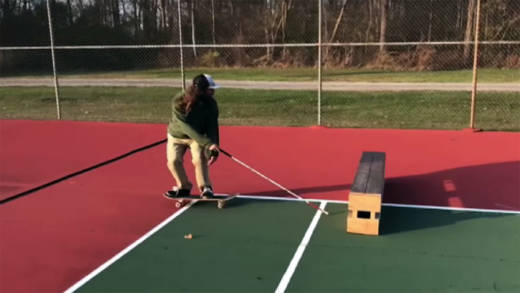The prize is named for James Holman, who in 1832 became the first blind person to circumnavigate the globe.
“He was 200 years ahead of his time, traveled all over the world, did it independently," Bashin says. "No caretaker, no guide, just talked his way around the world and went on to become a best-selling travel writer."
Bay Area semifinalist Dennis O’Hanlon plans to retrace some of James Holman’s travels by backpacking across the world. He lost his sight at 53, and in the past two years has sailed the Pacific Coast, the Channel Islands and the San Francisco Bay.
“At Lighthouse I learned of James Holman, who rejected society's view of the blind," O’Hanlon says in his application video. "Like Holman, I’m not a victim. Like Holman, I travel."
Other Bay Area semifinalists include kayaker Ahmet Ustunel, ukulele player Angela Denise Davis, musician Graham Norwood, writer Jennifer Justice, coffee brewer Serena Olsen, musical theater enthusiast Christina Daniels and aspiring documentary filmmaker Iman Awad.
Each applicant submitted a 90-second pitch on YouTube. For most of the applicants, it was the first video they’d ever posted.
When asked why LightHouse required video instead of audio applications, Bashin replies, “It’s the medium of today. Anyone with a smartphone and a friend can record a video pretty easily. Although some people were daunted by this, it’s that adaptability that we are celebrating here. The aim is to not have a separate, segregated world.”
LightHouse staff have noticed applicants continuing to publish videos after their initial post.
YouTube has the added benefit of being more shareable, and Bashin hopes people will watch the applications.
“Once you see the applicants, you can’t unthink the effect it has,” he says.
The effect, Bashin hopes, is to break down the preconceived notions of what blind people can do.
“In all actuality, we are just like everyone else. We have dreams and hopes and things we strive for in life. The only difference is that we get to the end result a little differently than everyone else,” says Abigail, a podcaster from Brooklyn, in her video.
At first, it’s striking to see a visually impaired skateboarder. Then you see another. There are two skateboarding semifinalists in the running for the Holman Prize. While one seems to skate unaided, the other makes use of a cane to find where to grind his board and beeping devices to tell him where to hit a jump.
A number of applicants aim to inspire by accomplishing physical or creative feats, and others are simply looking for adventure. Then there are those with plans to create programs that will provide education and jobs for the blind. The latter group includes a beekeeper in Uganda, a Bay Area coffee roaster, a rocket scientist in Colorado and a few people trying to make Braille more accessible across the globe.
The next step for semifinalists will be to put together a detailed budget of their plan and a timeline of how it will be executed. Three finalists will be selected by a panel of judges that include the author of a book on Robert Holman, Bashin and blind explorers, business people and activists.
Bashin says that the LightHouse is using 1 percent of its annual budget to fund this prize and similar projects. The funding was partially made possible by a $125 million donation in 2015 from a complete stranger, possibly the largest-ever single donation to an organization for the blind.
While that may seem like a lot of money, for context, there are an estimated 285 million people with visual impairment worldwide. Of those, 39 million are blind while 246 million have low vision. The majority live in low-income settings.
“We’ve been so overwhelmed by the response of good proposals that we’re now looking for more partners who might want to support blind people’s dreams,” Bashin says.

